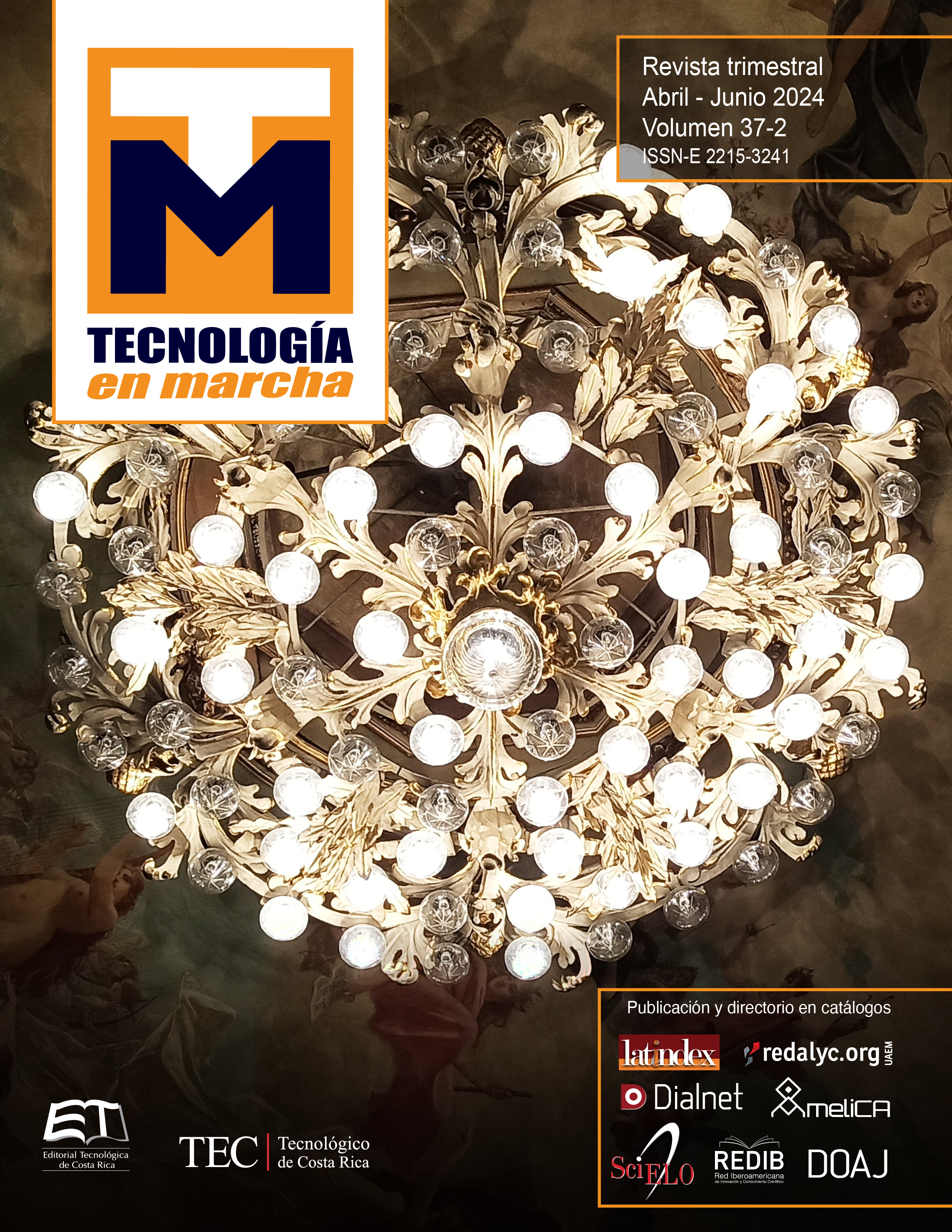Towards the enhancement of asset management of critical equipment in SMEs: methodology and implementation proposal
Main Article Content
Abstract
SMEs are small and medium-sized enterprises that arise from an idea of marketing a product or service. The growth of these companies entails an increase in the complexity of their organization. From the increase in internal structure to the relationship with some external actors, such as regulatory and fiscal entities, it poses challenges for which adequate preparation is not always available or the most efficient path to address them is not clear. An example of this can be seen with the management of company assets, which is often rudimentary and there is no quantified notion of the criticality of assets for the SME’s business. Through an Asset Management Model, an SME can chart a path towards efficient use of its assets, avoiding unnecessary expenses in repairs, as well as problems that can affect business continuity. This better use of assets results in greater value to the SME’s business model. This technical note proposes a methodology for the implementation of Asset Management based on the INTE/ISO 55001 standard. The objective is to adapt the different steps for the early implementation of Asset Management Models that are common in large consolidated companies to small and medium-sized enterprises. This methodology was validated in a real case study in a medium-sized company in Costa Rica. The results not only showed the rudimentary asset management in SMEs but also the viability of implementing an Asset Management Model in early stages of SMEs.
Article Details

This work is licensed under a Creative Commons Attribution-NonCommercial-NoDerivatives 4.0 International License.
Los autores conservan los derechos de autor y ceden a la revista el derecho de la primera publicación y pueda editarlo, reproducirlo, distribuirlo, exhibirlo y comunicarlo en el país y en el extranjero mediante medios impresos y electrónicos. Asimismo, asumen el compromiso sobre cualquier litigio o reclamación relacionada con derechos de propiedad intelectual, exonerando de responsabilidad a la Editorial Tecnológica de Costa Rica. Además, se establece que los autores pueden realizar otros acuerdos contractuales independientes y adicionales para la distribución no exclusiva de la versión del artículo publicado en esta revista (p. ej., incluirlo en un repositorio institucional o publicarlo en un libro) siempre que indiquen claramente que el trabajo se publicó por primera vez en esta revista.
References
INTECO. (2015). INTE ISO 55000:2015 Gestión de activos. Aspectos generales, principios y terminología.
Herrera, N. E. N., 2021. ¿Cómo anticipar los resultados financieros de la Gestión de Activos?.
Atmadyaya, Sazali, & Hassan, 2021. Maintenance Strategy for Engine Oil 100-Ton Truck Using Taguchi Method at Coal Mining Company.
Violino, B. (2020). IoT and AI boost Volvo Trucks vehicle connectivity. Network World. https://www. networkworld. com/article/3587404/volvotrucks-boosts-vehicle-connectivity-with-ai-and-iot. html.
Caguana Quilumbaquí, J. E. (2019). La gestión de activos fijos en la empresa manufacturas de cuero Calzafer Cía. Ltda (Bachelor’s thesis, Universidad Técnica de Ambato. Facultad de Contabilidad y Auditoría. Carrera Contabilidad y Auditoría).
Plata Navas, S. (2021) Uso de la tecnología como herramienta integradora en la gestión de activos de una organización del sector hidrocarburos.
Chávez Liquinchana, Á. O. (2020). Análisis del uso de herramientas informáticas para la gestión de activos empresariales en las empresas del sector alimenticio registradas en la Cámara de la Pequeña y Mediana Empresa de Pichincha (Master’s thesis, Quito, EC: Universidad Andina Simón Bolívar, Sede Ecuador).
Baylón Caballero, J. L. (2020). Incidencia de la trazabilidad en la gestión de activos fijos de la Empresa Tecnológica de Alimentos SA.
Satama Ramírez, H. I., & Vélez Calderón, F. C. (2018). Propuesta para la gestión integral de activos físicos dentro del área de mantenimiento vehicular dirigido al Benemérito Cuerpo de Bomberos Voluntarios de Cuenca (Bachelor’s thesis).
Amendola, L., & Depool, T. (2020). ABC de la Gestión de Activos. Madrid: Ediciones PMM Institute for Learning.
Norma Norsok Standard Z-008. (2011). Risk based maintenance and consequence classification.
Ren, Z., Verma, A. S., Li, Y., Teuwen, J. J., & Jiang, Z. (2021). Offshore wind turbine operations and maintenance: A state-of-the-art review. Renewable and Sustainable Energy Reviews, 144, 110886.
Carbo Mora, C. R. (2019). La gestión de activos como herramienta para la toma de decisiones de inversión en la compañía concesionaria del Aeropuerto de Guayaquil.
Caqui Alejandro, N. A. (2021). Control de activos fijos y su incidencia en la gestión financiera de la empresa Transportes Pomacocha SAC, en la Provincia Constitucional del Callao-2019.
Parra, D., Rosario, E., González, E., & Zabala, M. (2020). Sistema de gestión tecnológica para unidades productivas integradas. La Tecnología y su huella en las Áreas del quehacer humano. REVECITEC, 10(1), 114-126.
Baylón Caballero, J. L. (2020). Incidencia de la trazabilidad en la gestión de activos fijos de la Empresa Tecnológica de Alimentos SA, 2019.
Paco, J. A., Montaño, M. F. R., & Ruíz, J. M. E. (2021). CAPÍTULO 3 LA GESTIÓN DE ACTIVOS Y RECURSOS INTANGIBLES EN LAS PYMES INDUSTRIALES. Estrategias y competitividad en la era digital, 579.
Ahumada, F. G. (2018). Alineamiento entre costes de Ciclo de Vida: estrategias de Mantenimiento y Gestión de Activos. Mantenimiento: ingeniería industrial y de edificios, (318), 27-35.
Galindo Vargas, A. C. (2020). Implementación de la norma ISO 55001 en ISA Intercolombia y su impacto en la transformación cultural de la organización (Doctoral dissertation, Universidad EAFIT).
Nuñez Velarde, K. G., & Pacheco Chávez, P. G. (2021). Optimización del proceso de gestión de flota para una empresa de transporte de carga por carretera usando Machine Learning, BI, GPS y SMS Gateway.

